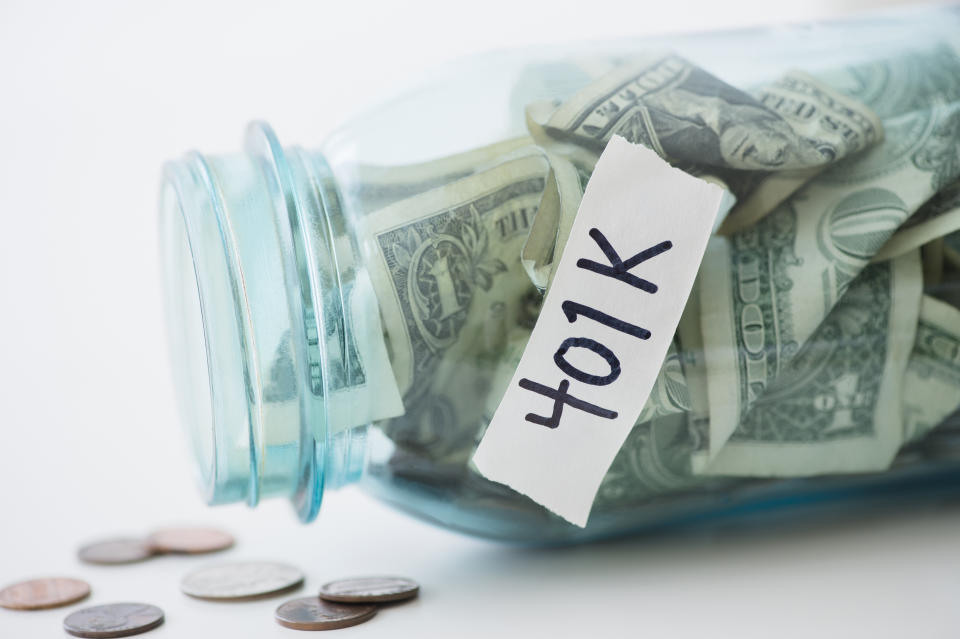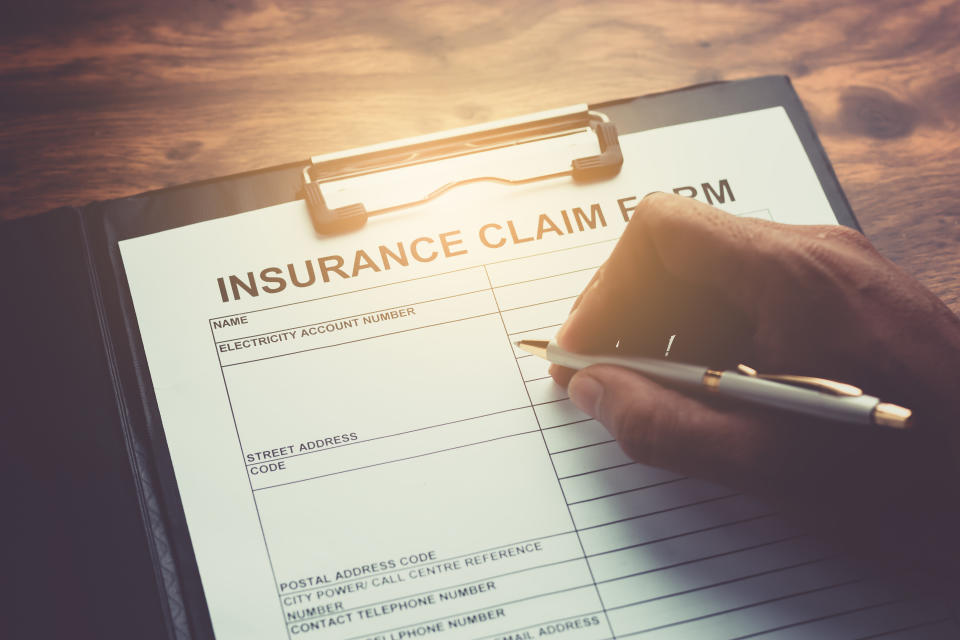What Negative Interest Rates Would Mean For Your Mortgage, Savings And More
Imagine a world in which banks pay you to borrow money, and charge you a fee to keep savings in your bank account. Soon, that may not be difficult to fathom at all.
As the global economy continues to slow as a result of the coronavirus crisis, central banks around the world have been cutting interest rates in an attempt to stimulate growth. In the U.S., the Federal Reserve implemented a number of emergency rate cuts, most recently slashing its target rate to zero. This leaves many people wondering if the Fed will follow the lead of countries that have set negative interest rates.
Once considered a short-term solution for struggling economies, negative interest rates are now in place in Japan, Denmark and other European countries. And it’s a concept President Donald Trump loves.
“We’re forced to compete with nations that are getting negative rates, something very new,” Trump said during a speech at the World Economic Forum in January. “Meaning, they get paid to borrow money, something I could get used to very quickly. Love that.”
In fact, the president has tweeted many times about his desire for negative interest rates.
As long as other countries are receiving the benefits of Negative Rates, the USA should also accept the “GIFT”. Big numbers!
— Donald J. Trump (@realDonaldTrump) May 12, 2020
“Over in Europe and Japan they have NEGATIVE RATES. They get paid to borrow money. Don’t we have to follow our competitors?” @Varneyco Yes we do. The Fed doesn’t have a clue! We have unlimited potential, only held back by the Federal Reserve. But we are winning anyway!
— Donald J. Trump (@realDonaldTrump) October 29, 2019
Germany, and so many other countries, have negative interest rates, “they get paid for loaning money,” and our Federal Reserve fails to act! Remember, these are also our weak currency competitors!
— Donald J. Trump (@realDonaldTrump) September 3, 2019
The Federal Reserve should get our interest rates down to ZERO, or less, and we should then start to refinance our debt. INTEREST COST COULD BE BROUGHT WAY DOWN, while at the same time substantially lengthening the term. We have the great currency, power, and balance sheet.....
— Donald J. Trump (@realDonaldTrump) September 11, 2019
....The USA should always be paying the the lowest rate. No Inflation! It is only the naïveté of Jay Powell and the Federal Reserve that doesn’t allow us to do what other countries are already doing. A once in a lifetime opportunity that we are missing because of “Boneheads.”
— Donald J. Trump (@realDonaldTrump) September 11, 2019
But what does it mean to have negative interest rates? Here’s a look at how they work and what they would mean for your money.
How Negative Interest Rates Work
In banking, interest rates represent the cost lenders charge you to borrow money or the yield you earn on your savings. It might seem like a strange concept to have negative rates, but when the central bank of a country reduces its target interest rate to below zero, banks are essentially charged money for maintaining excess liquidity, said Meenaz Sunderji, a banking expert and executive vice president of partner growth at Zafin. That means banks have an incentive to lend money out, and are discouraged from keeping too much cash on deposit.
What does that mean for bank customers? For one, the cost of borrowing money is much cheaper, Sunderji said. In fact, borrowers may essentially get paid to borrow money. “They don’t give them direct cash in their hands, but every month, the debt is reduced by more than the amount that they’re required to pay,” he said. In Denmark, for example, banks issued the first negative-rate mortgages, where customers were charged -0.50% per year on their home loans.
Borrowers who have existing debts such as a mortgage, student loans, or credit cards, can also consolidate their loans at a much lower rate, allowing them to pay less interest overall and use those savings to increase spending or pay off the debt more aggressively.
On the other hand, savers are discouraged from keeping money in bank accounts. They either earn no interest on their savings at all, or in some cases they may be charged a fee to keep money on deposit. “It usually depends on the bank and the market,” Sunderji said.
In essence, negative interest rates are a tool that central banks can use to stimulate the economy. The theory is that if it costs money to save, but it’s cheap to borrow, consumers will be more likely to take out loans, increase spending and invest their money rather than hoard it.
Great For Borrowers, Terrible For Savers
Implementing negative interest rates would flip traditional banking on its head. And depending on your financial situation and goals, that could be a good or bad thing.
Under normal circumstances, people are rewarded for saving money in the bank through interest earned on their deposits. And it generally costs people to borrow money, since they have to pay interest on their loans. In a negative interest rate environment, however, the opposite is true.
You're essentially losing money safely by keeping your money in the bank.
Instead, consumers would be incentivized to spend their cash and disincentivized to build it up. “This would essentially create a behavioral shift in what we as consumers have been traditionally doing, which is building wealth through saving money,” said Joseph Voellm, a certified financial fiduciary and chartered financial consultant with The JL Smith Group.
This situation would be great for people who want to buy a house or have more money available to invest. However, consumers would be even less likely to sock away money in their bank accounts than they already are. “As it sits now, the interest rate that we’re getting on our checking and savings account is extremely low,” Voellm said. “If you add in average inflation against that abysmal rate of return ... you’re essentially losing money by safely keeping your money in the bank.”
Because of this, we could see a potentially concerning shift in consumer behavior.
“Those that have revolving lines of credit may see their cost of borrowing actually get lower, reflected in the APR attached to their credit card,” Voellm said. “Consumers may start to see their credit card more as the preferred method of payment.”
Today, it’s fairly common for people to make purchases on their credit cards and then pay off that balance at the end of the month, especially with the proliferation of credit card rewards. The big difference here would be that with no incentive to keep money in the bank, people may begin charging up higher amounts on their credit cards, leading to an upswing in consumer debt and lack of actual savings. “The more dangerous aspect of this is that consumers could start to rely on their credit cards as an emergency savings fund, instead of just having that money stashed aside in the bank,” Voellm explained. “Behaviorally, we do not want that as financial advisers.”
For those who want better interest rates on their savings, Voellm suggested moving to an online bank, as they’re in a better position to offer a more competitive rate due to low overhead. However, the truth is that extremely low or even negative interest rates mean savers will have to leave their comfort zones to see any return on their money.
“Negative interest rates would hurt our savers and income investors of the world, because they would be forced into riskier positions than they otherwise would have been,” Voellm said. “As financial advisers, we don’t want to push people out of their risk tolerance.”
Will Negative Rates Come To The United States?
The concept of negative rates as a tool to stimulate the economy makes sense in theory. However, Voellm pointed out that there isn’t a whole lot of data to prove it would actually work. A handful of countries have implemented negative rates in some fashion, but the sample size is too small to definitively say we’d have good results in the U.S.
There are risks as well, which could outweigh the benefits.
For one, negative rates would have a serious impact on banks’ bottom lines, since they rely on the difference between the cost of holding deposits vs. the cost of lending ― known as the spread ― to make money. “That [spread] gets squeezed significantly when you go down to lower interest rates and negative interest rates,” Sunderji said. A tightening spread would likely impact the amount of credit banks bring to the market and cause them to tighten up lending, which counters the goal of lowering rates to begin with.
With no incentive to keep money in banks, consumers could also pull their savings out and hide it under the mattress, à la the Great Depression. That massive drain of cash from the banking system would actually work to push rates higher.
Not to mention, unemployment in the U.S. is rampant thanks to the coronavirus pandemic. Tens of millions of Americans are now faced with figuring out how to put food on the table, much less buying a new car or house. Pushing rates lower and lower doesn’t fix that problem. “Those who don’t have the capacity to borrow are going to be in a worse situation,” Voellm said. “They would essentially be a drag on this strategy.”
Fed Chair Jerome Powell stated during a webcast with the Peterson Institute for International Economics in mid May that the Fed is not considering moving to negative interest rates, as it already has a “good toolkit” to rely on. But Trump continues to push the idea. As recently as two weeks ago, he told reporters in the White House he “feels strongly we should have negative rates.” Fed funds futures are currently pricing in rates of about one basis point below zero by June 2021.
There is a real possibility that we could implement negative interest rates in the U.S., according to Voellm. However, that decision would rely on several economic factors. “I would say it’s certainly on the table. But there are certain things that need to happen before we take that step,” he said.
For example, the stock market seems to be on the upswing since its March low, so it’s unlikely we’d consider negative rates unless it crashed again, according to Voellm. Other situations that could push the U.S. toward negative interest rates, he said, include unemployment staying high for too long or even getting worse, a second wave of COVID-19 outbreaks or the economy remaining stagnant for an extended period despite other actions by the Fed. “I wouldn’t put too much weight on one thing tipping the scale,” he said.
Related...
Recession vs. Depression: What's The Difference And Which One Are We Headed Toward?
8 Stats That Show How Coronavirus Has Changed Our Spending Habits
Will There Be Another Stock Market Crash?
Also on HuffPost
Love HuffPost? Become a founding member of HuffPost Plus today.
Roll Over Your Old 401(k)

Switch Banks

Negotiate With Your Internet Provider

Complete A Health Assessment

Sign Up For Auto-Pay

Rethink Your Health Insurance

Skim Your Bank Statements

Listen To A Personal Finance Podcast

Switch To A Prepaid Cellphone Plan

Set It And Forget It

This article originally appeared on HuffPost.


